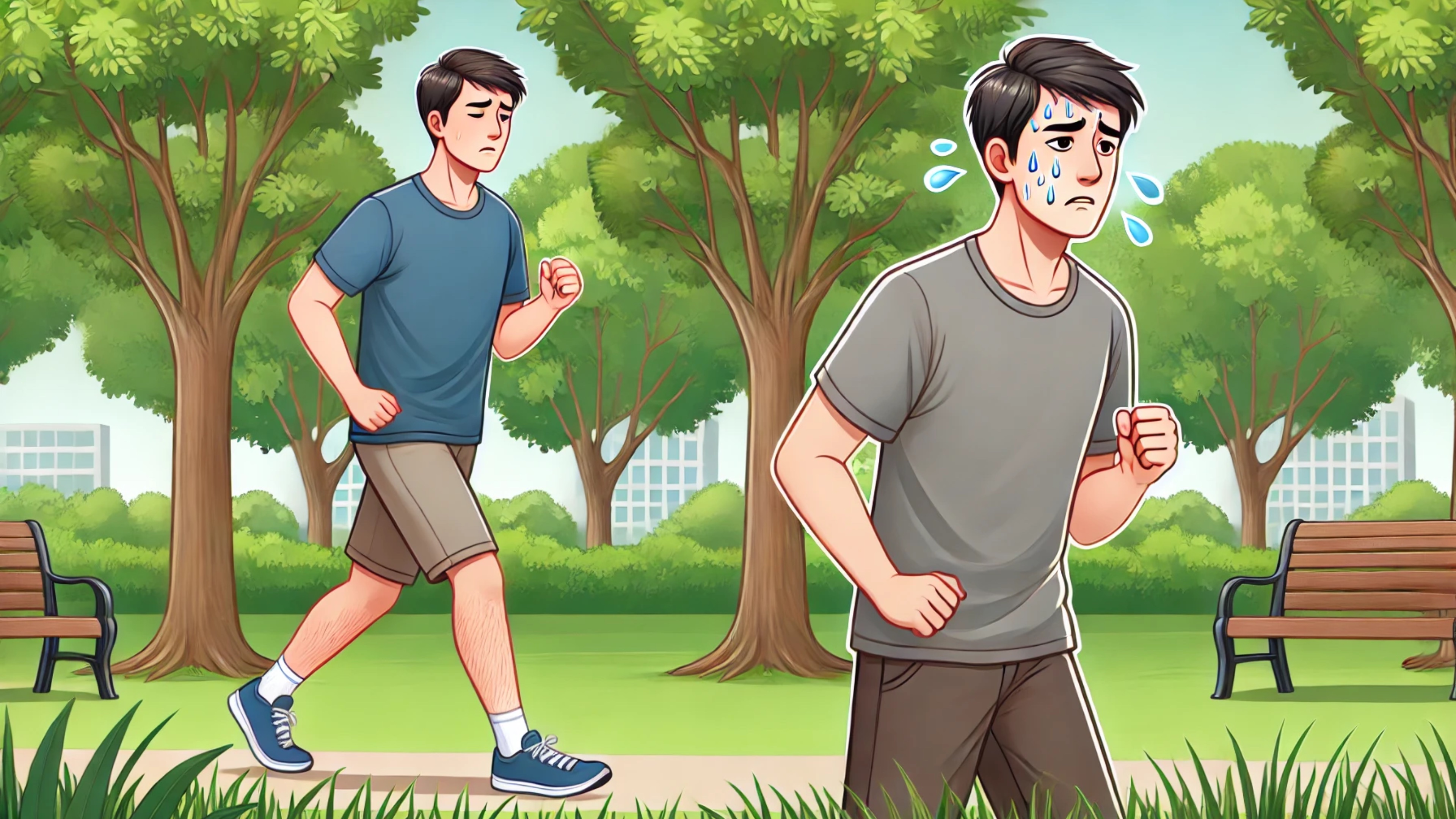
Brisk Walking vs.Slow
3 months ago By Yogi AnoopQ&A on Brisk Walking vs. Slow, Mindful Walking
(A conversation between Yogi Anoop & his Student)
Q: Guruji, I’ve heard that brisk walking is good for health. It helps you burn calories, gets the heart pumping, and even doctors recommend it. Why would you say it’s harmful?
A: Brisk walking, or walking at a hyper pace, is easy and doesn’t require much thought. Think about it like shooting an arrow in the dark—anyone can do it. But slow, mindful walking is like threading a needle. Just as threading a needle requires patience and a calm mind, so does walking slowly. When you slow down, you allow your mind and body to work in harmony, and that’s where the real benefits begin.
Q: Can you explain how threading a needle is connected to walking slowly?
A: Absolutely. Imagine threading a needle. You have to move your hands and fingers carefully and slowly. Your mind, along with your entire sensory system, focuses entirely on this small, precise task. In a similar way, when you walk slowly and mindfully, your mental awareness extends to all your senses, becoming fully present. In brisk, hyper walking, you only connect with the outer muscles; you don’t reach into the cellular level within your body. It’s like shooting an arrow in the dark—there’s no need for concentration. However, when you slow down, you actually have the potential to burn more fat than during a fast walk. Without calmness, you lack the stability and focus needed, and you miss out on the deeper connection that slow walking offers.
Q: So what should the right pace be for walking? How can I tell if it’s beneficial?
A: The right pace is one that energizes you without leaving you feeling drained. As you walk, any fatigue should gradually dissolve, leaving you calm and at ease. Your head should feel lighter, without any physical tiredness. You should feel connected to your whole body during the walk, not just afterward. If your mind feels more peaceful and your body feels cool yet energized, then you know the walk is truly beneficial.
Q: But we’re often told to sweat it out and walk fast. Isn’t that good for the heart?
A: That’s a common belief, yes. Doctors and elders often recommend brisk walking for a “healthy heart.” But in my experience, walking fast isn’t as beneficial as it seems. When you push your body into hyperactivity, your mind also becomes hyper, creating a temporary state of stress in both. It’s like accelerating your vehicle in a jerky, erratic manner—your mind becomes unstable, and over time, your body or “vehicle” is more likely to develop issues. This habit of mental hyperactivity affects your entire system, making your body and sensory organs hyper as well. Ultimately, this hyperactivity drains you rather than rejuvenates you, and even in this situation, your heart might become unhealthy.
Q: Can you give an example to illustrate this idea of hyperactivity?
A: Certainly. Imagine you’re driving a car and suddenly start speeding beyond limits. After a while, you’ll feel your face tense up, your senses heighten, and your mind stress out. You’re just sitting in the car, but because of the speed, your entire system is under stress. Now, if you drive at a moderate pace, you won’t feel breathless or stressed. You can go much farther, and even enjoy the journey. Fast walking creates similar stress for your body and mind.
Q: So you’re saying that when we walk slowly, we’re like the driver moving at a comfortable speed?
A: Exactly. Walking slowly allows your mind to sync with your brain, and your brain with your body. This harmony results in better hormonal balance and a sense of joy. It energizes you without causing fatigue, allowing you to walk as long as you like. You can reach deep within the cellular level of your body, and your mental steadiness, spiritual growth, and reduction in unnecessary thoughts will improve. Your awareness will become much sharper than before.
Q: That sounds calming, but does it actually benefit physical health?
A: Absolutely. For instance, during the COVID period, I walked 9 to 12 kilometers every day inside my home—slowly and calmly. While walking, I feel that ‘I’ am stable, and only my body is moving. This calmness brings balance to my breathing, steadies my heart rate, and brings a deep sense of peace. It also helps regulate blood sugar levels, control acid reflux, and improve digestion. When your mind is calm, your body’s functions align with it. You should feel that your body is moving while you remain still. In fact, the ultimate goal is to feel that you are an unmovable entity while your body, like a vehicle, moves around you. You can only reach this state when you walk at a slow, calm pace. If you’re always in a hurry, how could you possibly balance your body and senses?
Q: Can slow, mindful walking help with other health issues?
A: Yes. Walking this way even helps with trapped gas, which can often cause discomfort. The biggest benefit, though, is the increase in self-satisfaction. When your actions are calm and relaxed, your level of self-satisfaction rises, creating a deep sense of well-being. This balance even aligns the body’s energies, like Vata and Pitta, bringing an inner harmony.
Q: So, Guruji, you’re saying that the secret to a healthy, balanced body is in slow, mindful walking rather than brisk walking?
A: Exactly, shailesh. Any action done with a relaxed mind and body will enhance self-satisfaction, creating balance within. When you walk mindfully, you’re nourishing your body and spirit in ways that a hurried walk could never achieve.
Recent Blog
Copyright - by Yogi Anoop Academy
